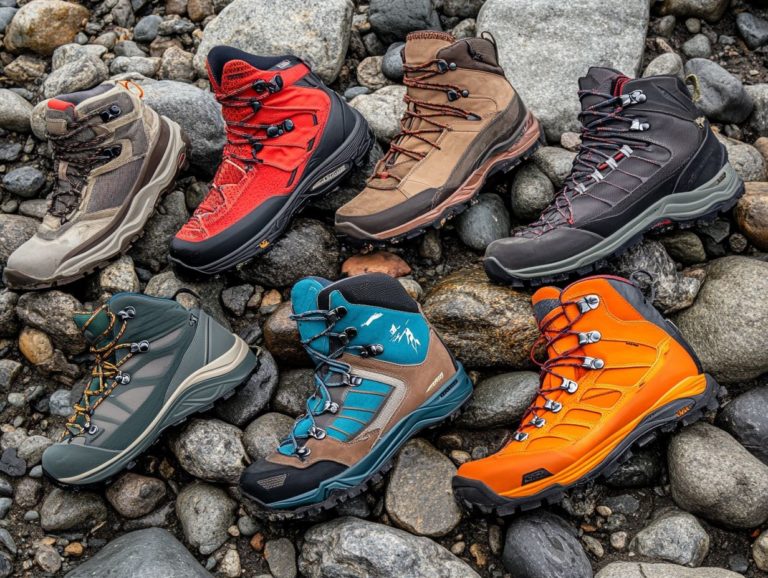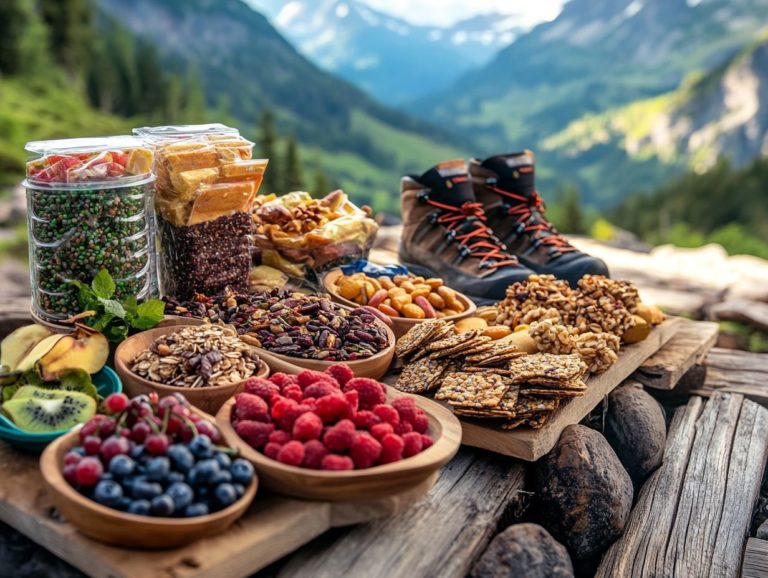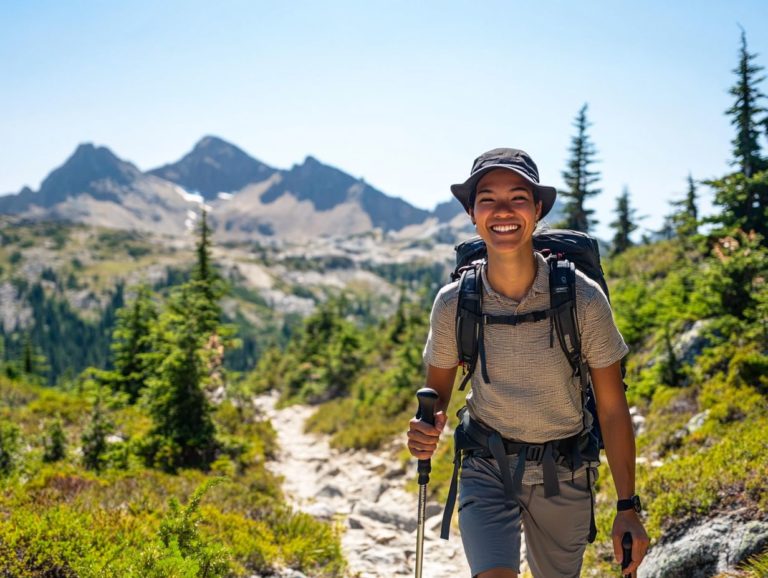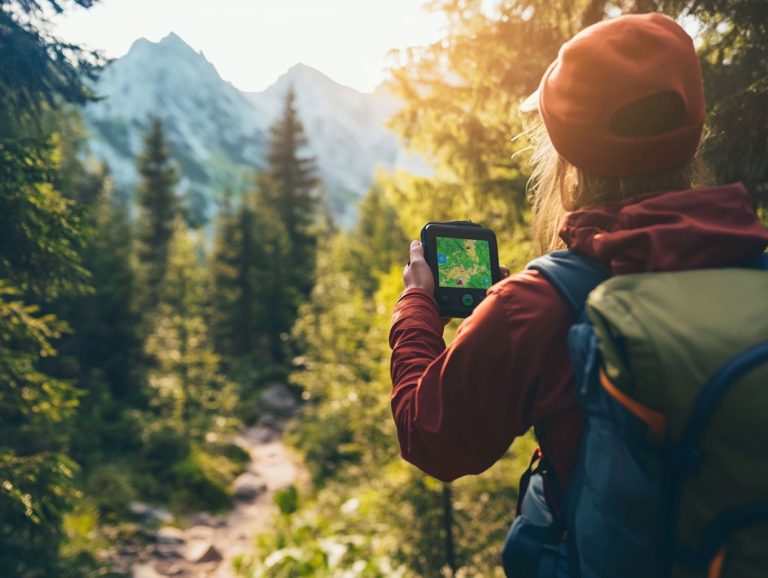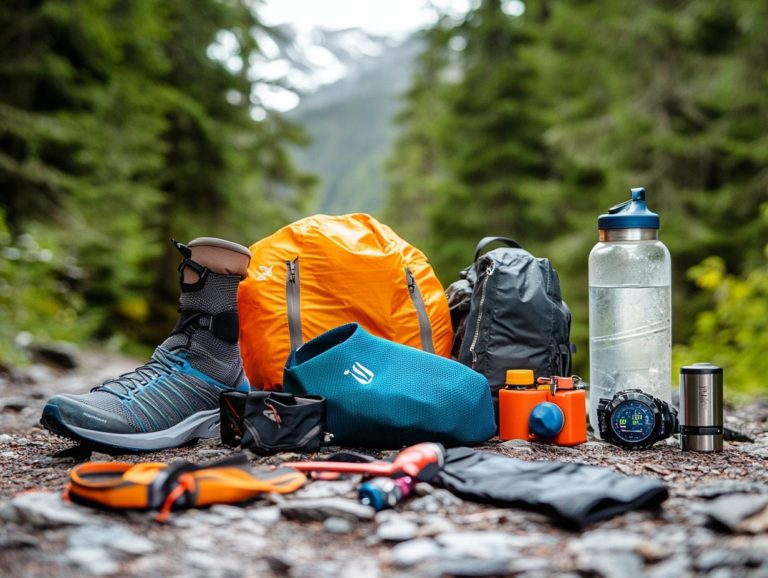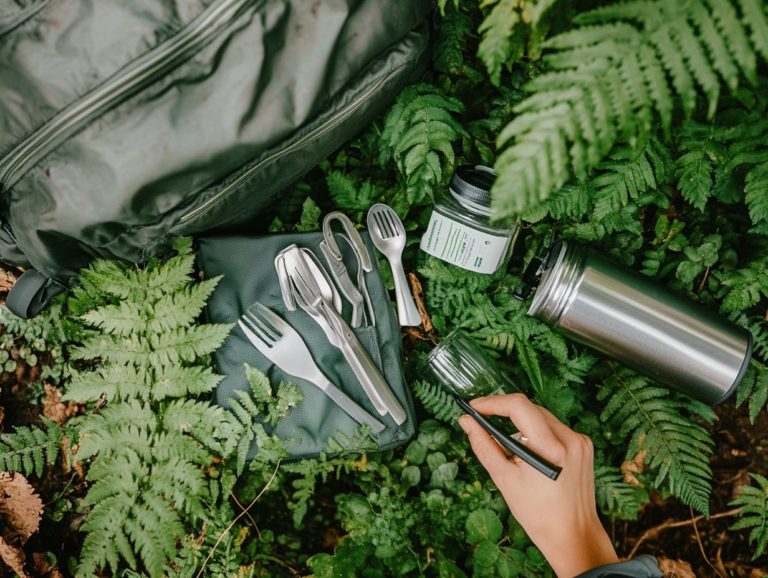How to Set Up a Campsite?
Setting up a campground can be one of the most rewarding outdoor experiences. It demands careful planning and execution.
From selecting the ideal campsite location to ensuring you have the right gear, each step is vital to your camping adventure. Discover the key factors to consider when choosing a campsite and the essential gear for a comfortable stay.
You ll also find important safety tips and the Leave No Trace principles. This way, you help protect our beautiful outdoors. Get ready to elevate your camping experience with proper setup and fire safety!
Contents
- Key Takeaways:
- Choosing the Right Campsite
- Essential Gear for Setting Up a Campsite
- Setting Up Camp
- Campsite Safety
- Leave No Trace Principles
- Frequently Asked Questions
- How do I choose the perfect location for my campsite?
- What equipment do I need to set up a campsite?
- Can I set up a campsite in any outdoor area?
- How can I ensure a comfortable and safe sleep while camping?
- What should I consider when setting up a campfire?
- What are some tips for keeping my campsite clean and organized?
Key Takeaways:
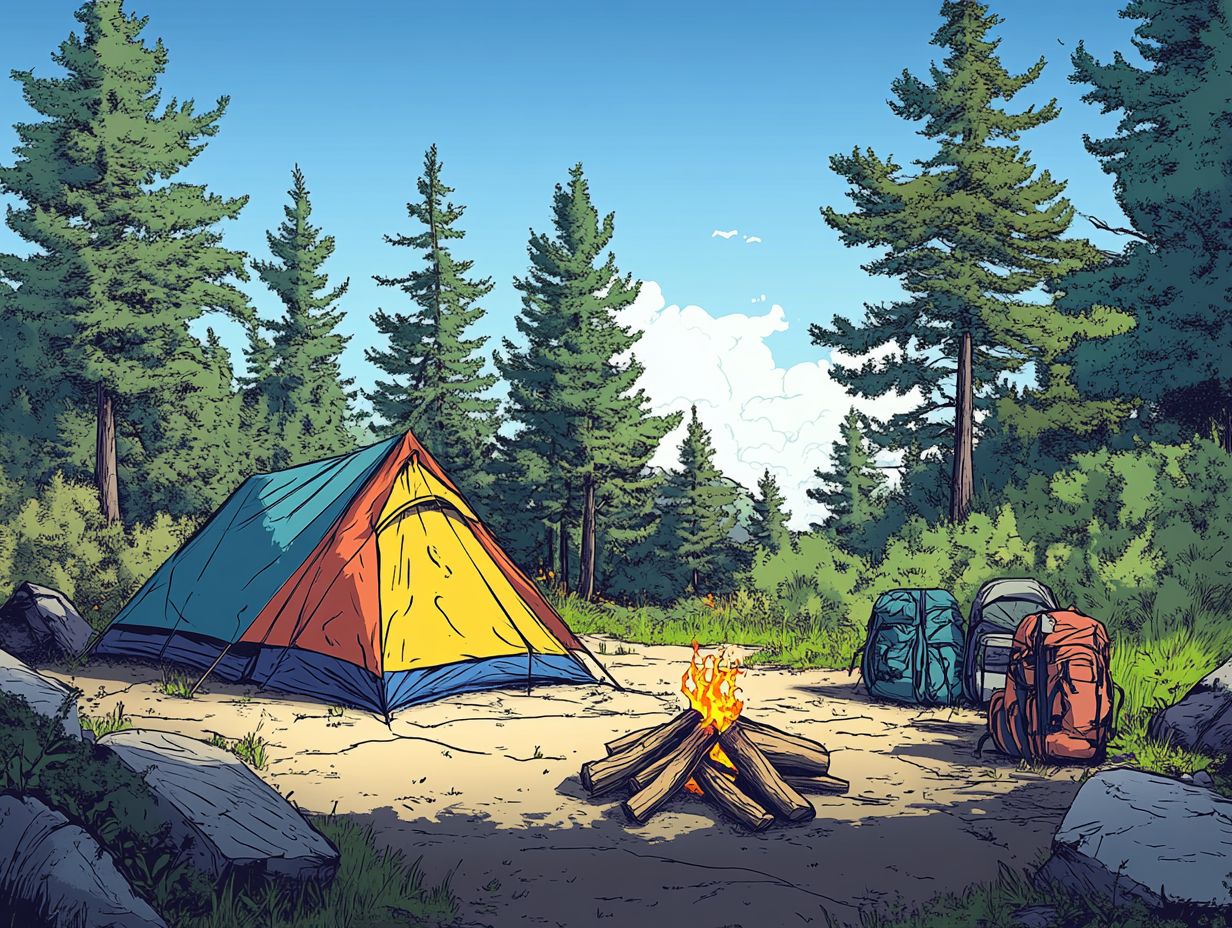
- Choose the right campsite by considering factors such as terrain, accessibility, and nearby resources.
- Essential gear for setting up a campsite includes tents, sleeping bags, cooking supplies, and storage solutions for food and water.
- When setting up camp, follow a step-by-step guide for maximum efficiency and safety.
Choosing the Right Campsite
Choosing the right campsite is essential for a successful camping experience. It greatly influences your comfort, safety, and overall enjoyment.
The perfect campsite should provide easy access to vital amenities like water, restrooms, and food storage. A secluded area for privacy is crucial too.
Consider factors such as weather conditions, campground regulations, and proximity to hiking trails to enhance your adventure. Understanding the various campsite options is essential. Consider a remote campsite or a family-friendly campground with flushing toilets and showers to enhance your experience.
Factors to Consider
When choosing a campsite, several essential factors come into play to ensure you have an enjoyable camping experience.
Accessibility is key; how easy it is to reach the site can shape your adventure. You ll want a spot that doesn t feel like a trek across the Himalayas just to unpack your gear.
Next, privacy is crucial. Seek a location that offers solitude while remaining conveniently close to restrooms, dumpsters, and picnic areas, which truly enhances your experience.
Don t overlook the impact of optimal weather conditions. Extreme temperatures can turn a delightful getaway into a challenging ordeal.
Finally, keep local regulations in mind. Specific rules about campfire usage and wildlife interactions can influence your campsite choice. This ensures your outing is safe and memorable.
Essential Gear for Setting Up a Campsite
Equipping yourself with the right gear is fundamental for creating a comfortable and safe campsite. This allows you to fully embrace the beauty of the great outdoors. Essential items include:
- A sturdy tent that provides reliable shelter,
- A dependable stove for your culinary needs and a portable grill for cooking,
- Effective storage solutions to keep food secure from curious wildlife.
Remember to pack essentials like propane for cooking and a well-stocked first-aid kit. Food storage containers and emergency supplies are vital too! Every piece of gear adds joy and comfort to your camping adventure. Choose wisely and prepare well!
Now that you ve got the essentials, gear up and get ready to explore the great outdoors!
Tents, Sleeping Bags, and Other Necessities
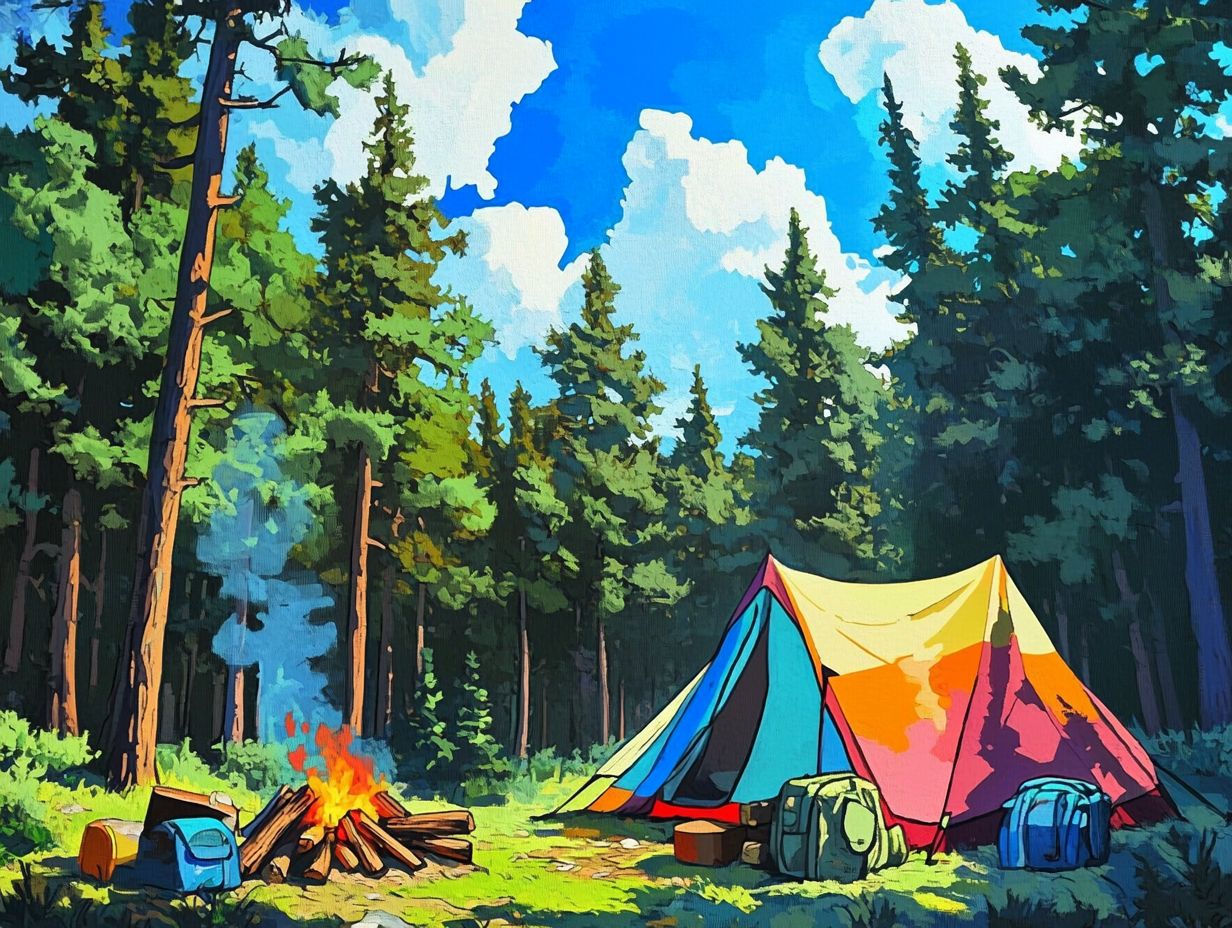
In terms of camping essentials, think of tents as your foundational allies, ensuring both comfort and protection from the elements.
Selecting the right tent can dramatically shape your camping experience. You have a spectrum of choices lightweight backpacking tents perfect for hikers or sturdy family tents that provide ample space for larger groups.
On the other hand, sleeping bags come in a variety that suits different weather conditions, boasting temperature ranges from summer-friendly options to winterized designs with extra insulation.
Many campers place a high premium on personal comfort, leading to specific preferences regarding size, weight, and materials. Whether you re gearing up for a cozy solo getaway in a two-season tent or indulging in a spacious sleeping bag with extra fluffiness, understanding these details can improve your outdoor experience.
Setting Up Camp
Setting up camp involves a series of crucial steps to ensure your campsite is functional, comfortable, and safe. Start by choosing the perfect location for your tent, ideally an area that provides natural protection from wind and rain while also considering your privacy from nearby campers.
Once you’ve pitched your tent, set up a cooking area, implement fire safety measures, and organize your gear. Taking the time to set up camp properly ensures a memorable outdoor experience.
Step-by-Step Guide
To successfully set up your campsite, follow these carefully curated steps for safety, comfort, and efficiency.
-
Start by choosing the perfect location ideally flat ground, free from hazards like dead trees or rocky terrain. This choice ensures a stable tent foundation and a safe space for cooking and other activities.
-
Next, gather your essential tools: tent pegs, a mallet, and fire-starting materials. With the layout in mind, pitch your tent, ensuring it faces away from prevailing winds for optimal ventilation and protection.
-
Once your shelter is secure, focus on establishing a fire setup that adheres to local regulations. Select a spot away from overhanging branches and prepare a clear area for cooking. To make your camping experience more enjoyable, check out setting up camp: a step-by-step guide for tips on organizing your utensils, food supplies, and a portable stove or grill while minimizing risks.
Campsite Safety
Ensuring campsite safety is essential for a successful camping experience. This involves precautions designed to protect yourself, your group, and the environment. Familiarize yourself with first-aid basics and emergency protocols, especially in regions where wildlife, such as bears, might appear.
Understanding best practices for safe food storage and remaining alert to potential hazards enhances your protection during outdoor adventures. By taking these necessary precautions, immerse yourself in nature with complete peace of mind.
Precautions and Tips
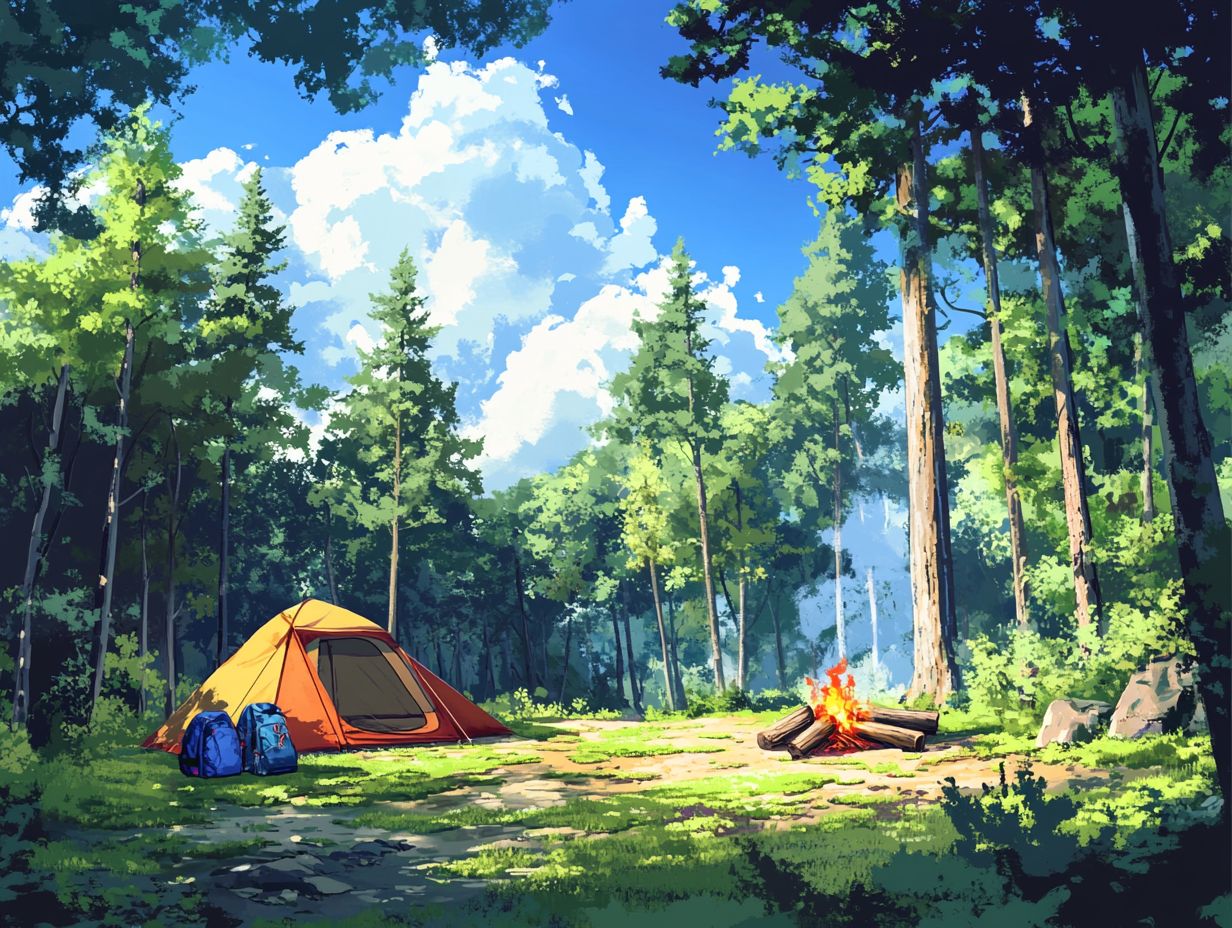
Taking the right precautions and staying aware of potential risks are vital for ensuring a safe camping experience. This means understanding the terrain and weather conditions while preparing for possible wildlife encounters.
For instance, store food securely in bear-proof containers and keep your cooking area clean to reduce the chance of attracting wandering animals. When encountering wildlife, maintain a respectful distance; many animals behave unpredictably, so it’s safest to admire them from afar.
Being prepared for minor injuries or emergencies can make a difference. Keep a well-stocked first-aid kit handy and know basic first-aid protocols to enhance your safety. By considering factors such as proper food storage and wildlife protection, you can significantly minimize risks and enjoy the great outdoors.
Leave No Trace Principles
Adhering to Leave No Trace principles is essential for minimizing your environmental impact while camping. This ensures that the beauty of nature is preserved for future generations, especially regarding responsible waste disposal.
These guidelines highlight the importance of responsible waste disposal, maintaining campsite cleanliness, and using natural resources respectfully and sustainably.
By embracing these ethical practices, you contribute to the well-being of the community and the environment. You also foster a culture of responsibility and respect for nature, ensuring that future generations can enjoy these areas as well.
Implement these principles to enhance your camping experience while promoting sustainability.
Minimizing Environmental Impact
Minimizing environmental impact is a fundamental tenet of Leave No Trace, guiding you to interact with nature responsibly.
By adopting practices like properly disposing of trash and limiting campfire use, you can significantly reduce your ecological footprint. Always remember to pack out what you pack in this means removing any trash, leftover food, or personal items to ensure the natural surroundings remain undisturbed.
Keeping a respectful distance from wildlife, such as bears and other animals, helps preserve their habitats and minimizes the risk of human-wildlife conflicts.
Staying on designated trails is crucial; it prevents soil erosion, protects native plants, and promotes a sustainable connection to the environment. Making mindful choices allows you to relish your outdoor experiences while cultivating a sustainable connection with nature.
Frequently Asked Questions
How do I choose the perfect location for my campsite?
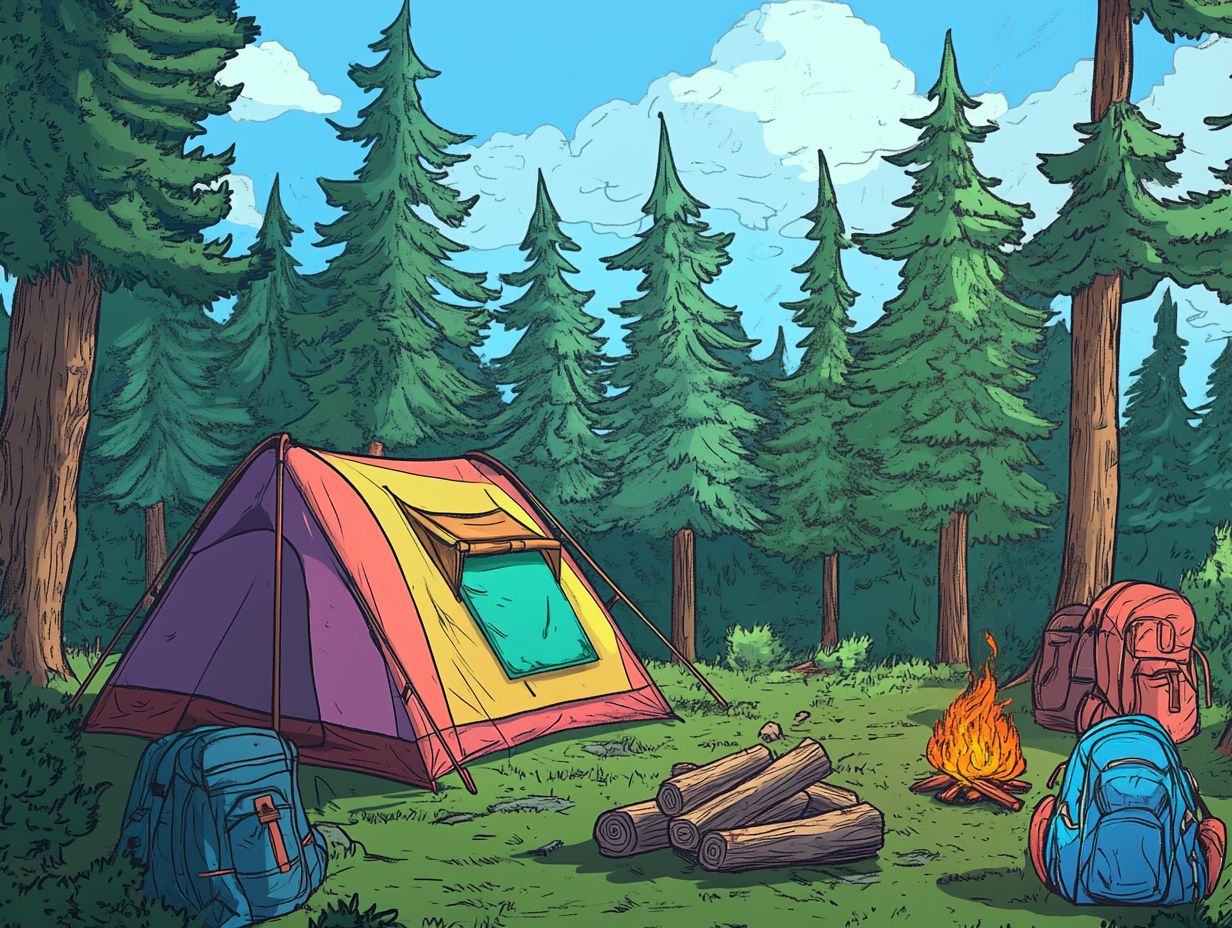
When setting up a campsite, choose a location that is flat and clear of rocks, roots, or debris. Also, consider proximity to water sources, bathroom facilities, and any potential hazards like steep cliffs or animal habitats.
What equipment do I need to set up a campsite?
- Tent
- Sleeping bags
- Cooking setup (camp stove, pots and pans, utensils)
- Camping chairs
- Coolers
- Campfire cooking equipment
- Tarp for extra protection from the elements
Can I set up a campsite in any outdoor area?
No, always check with local authorities before setting up a campsite in a new area. Some locations may require permits or have designated camping areas. Following these rules preserves the environment and maintains safety. Make a reservation in advance if required.
How can I ensure a comfortable and safe sleep while camping?
Choose a tent that suits the weather and has enough room for you and your gear. Bring sleeping pads or air mattresses for extra comfort and insulation.
Secure your campsite to prevent unexpected visits from wildlife. If camping with children, ensure they have a comfy sleeping setup too.
What should I consider when setting up a campfire?
First, check if campfires are allowed in your camping area. If so, pick a spot at least 15 feet from tents and trees, clearing any debris.
Always keep a bucket of water nearby and never leave the fire unattended. Having a good light source is essential for safety during the night.
What are some tips for keeping my campsite clean and organized?
Before your trip, plan for trash and waste disposal. Bring garbage bags and pack out all trash, including food scraps.
Designate a cooking and eating area. Clean up spills and messes immediately. Respect nature by leaving your campsite as you found it.

